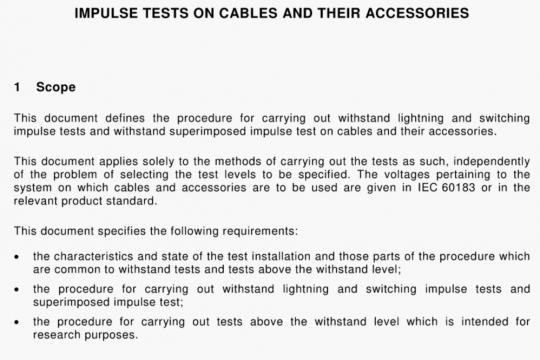IEC 61069-1 pdf free download
IEC 61069-1 pdf free download.Industrial-process measurement, control and automation – Evaluation of system properties for the purpose of system assessment – Part 1: Terminology and basic concepts.
4 Basis of an assessment
The purpose of the assessment of a system is to determine qualitatively and/or quantitatively the capability of the system to accomplish a specific mission.
Assessment of a system is judgement, based on evidence, of suitability of relevant system properties for a specific mission or class of missions.
To obtain total evidence would require complete (i.e. under all influencing factors) evaluation of all system properties of relevance to the specific mission or class of missions.
Since total evidence is rarely practical, an assessment of a system needs:
— to identify the criticality of the relevant system properties to accomplish the mission;
— to plan for evaluation of the relevant system properties with a cost-effective dedication of effort to the various system properties.
In conducting the assessment of a system, it is crucial to bear in mind the need to gain a maximum increase in confidence in the suitability of a system within practical cost and time constraints.
To accomplish a mission, a system is expected to be capable of performing the tasks necessary to support the mission, such as regulating pressures or flows, optimizing reactor conditions, etc.
The system is expected to provide the functions to enable these tasks to be performed. Such functions are, for example, those for measuring flows, storing data and displaying information. These functions are implemented in modules and elements. An element can be a piece of hardware, an orifice plate, an analogue to digital convertor, or a piece of software performing a flow calculation, storing a picture-image, etc. BCSs perform the tasks required, using the available functions, modules, and elements in various configurations. This characteristic of the system makes it difficult to synthesize the capability of a system to fulfil a specific task by evaluating the characteristics of the individual constituent functions, modules, and elements alone.
For example, a control function can be resident in or shared between:
— a module with its own data acquisition and real time trending capability;
— a module for process control with separate modules for data acquisition and data output, transferring data to each other via a communication network; or
— an external computer for process control tasks, making use of a BCS to perform data acquisition, data output and human interface tasks.
The functional model facilitates a clear description of the boundaries of the system to be assessed and serves to identify the elements which are within the scope of assessment.
The functional model also shows the relationship between the elements, and it supports the formulation of methods to assess the effectiveness of the functions within the system.
5.1.2 Process / machine interface functions
The process / machine interface functions receive signals from the process I machine or their associated equipment, and send output signals to the process I machine or their associated equipment.
5.1.3 Data processing functions
The data processing functions can be used for continuous control, batch control, discrete control, reporting, archiving and/or trending, etc. They act to process and transform information provided by the process/machine interface functions.
The data processing functions can be dedicated to individual tasks or they can support a combination of tasks required to achieve the system mission.
IEC 61069-1 pdf download.




